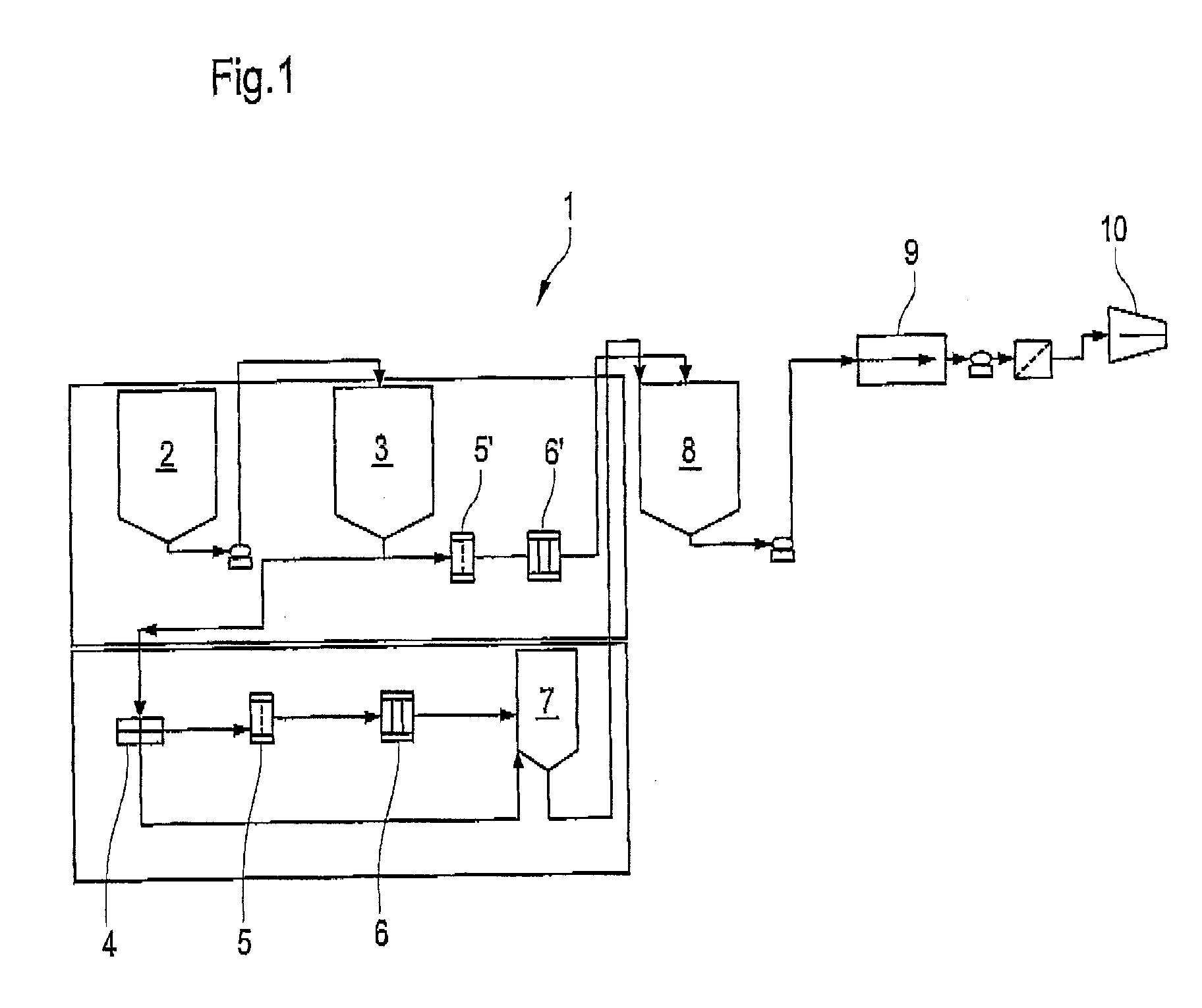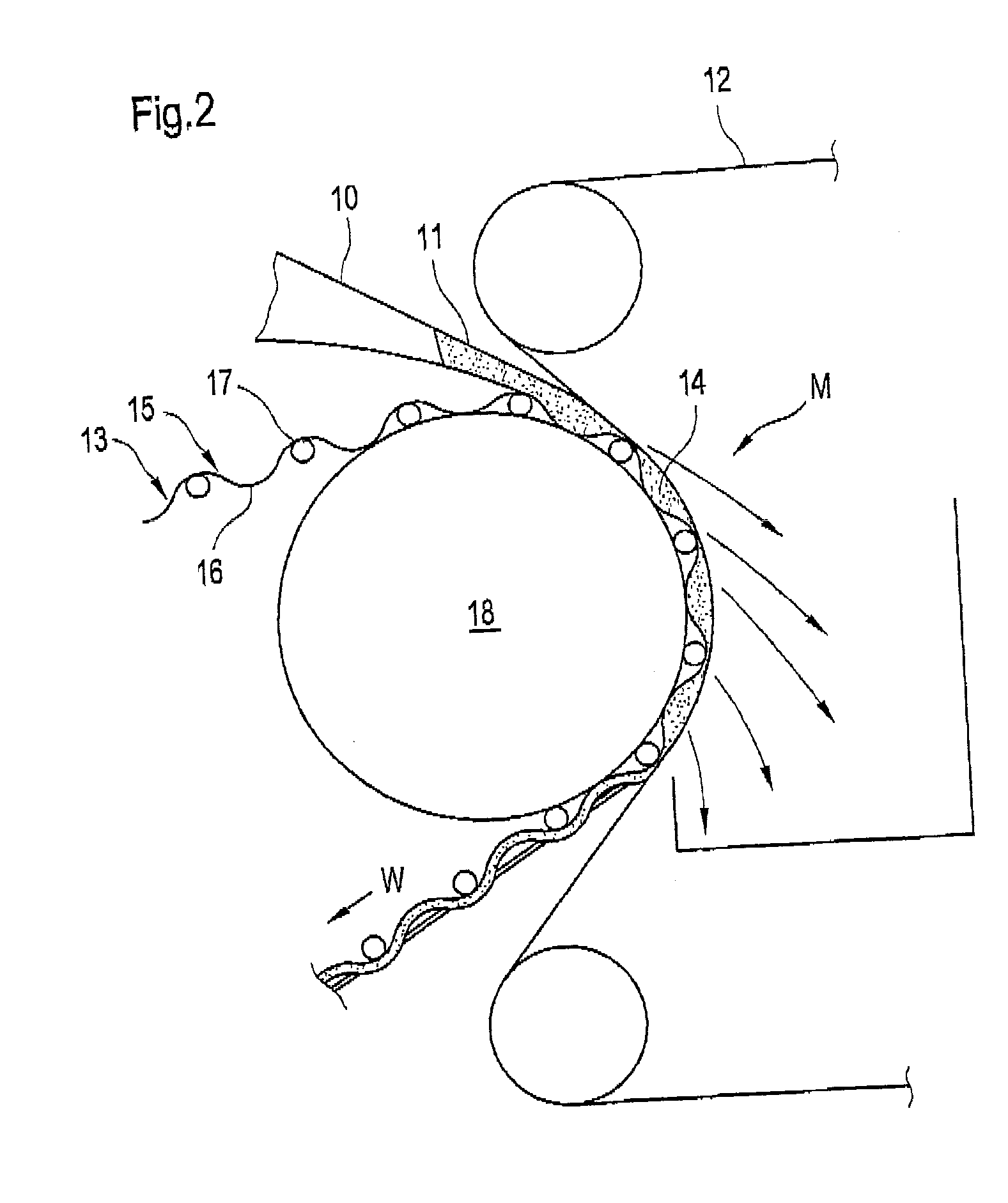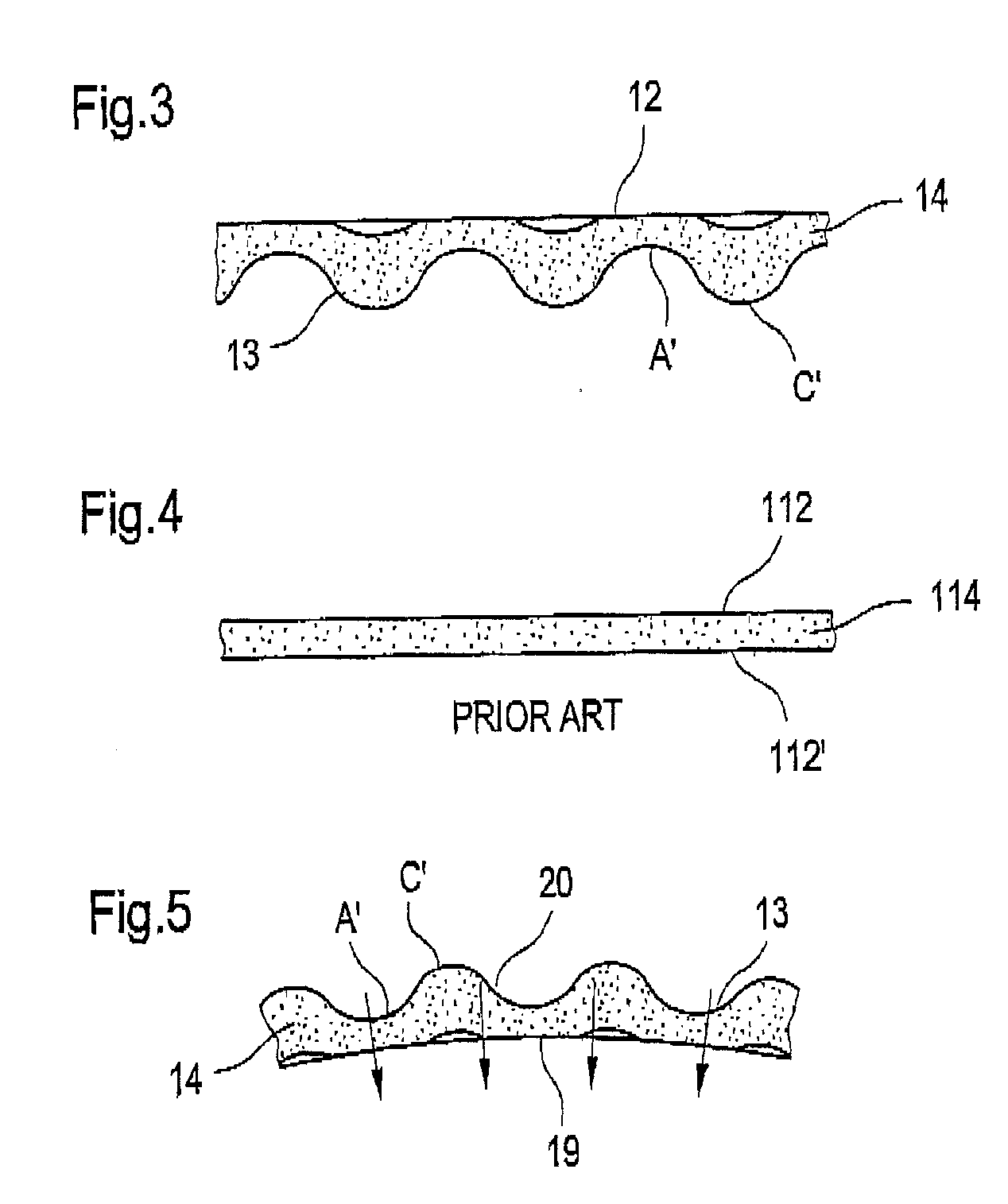Method for the production of tissue paper
a tissue paper and paper technology, applied in the direction of press section, grain treatment, non-fibrous pulp addition, etc., can solve the problems of unsuitable old paper for tissue paper production, and achieve the effects of good and gentle dewatering, easy expulsion, and gentle dewatering
- Summary
- Abstract
- Description
- Claims
- Application Information
AI Technical Summary
Benefits of technology
Problems solved by technology
Method used
Image
Examples
Embodiment Construction
[0060] Referring now to the drawings, and, more particularly to FIG. 1 there is shown an apparatus 1 for providing according to the present invention a pulp suspension which is subsequently used in the method for the production of a tissue paper web. Apparatus 1 includes a pulper 2 in which a feed pulp suspension obtained through the treatment of old paper exists in a pumpable state. The feed pulp suspension is conveyed from the pulper 2 to a mixing chest 3. At this stage the pulp has a consistency of less than 10%, i.e. as a rule 5% or less, and in this connection is referred to as low-consistency feed pulp.
[0061] In one embodiment the low-consistency feed pulp is conveyed to a concentrator 4, which can be constructed as a worm extruder for example, and is concentrated therein from a consistency of 5% to a consistency of 25% to 35% ideally around 30%, thus producing a high-consistency feed pulp suspension.
[0062] The high-consistency feed pulp suspension thus formed is subjected t...
PUM
| Property | Measurement | Unit |
|---|---|---|
| breaking length | aaaaa | aaaaa |
| breaking length | aaaaa | aaaaa |
| temperature | aaaaa | aaaaa |
Abstract
Description
Claims
Application Information
 Login to View More
Login to View More - R&D
- Intellectual Property
- Life Sciences
- Materials
- Tech Scout
- Unparalleled Data Quality
- Higher Quality Content
- 60% Fewer Hallucinations
Browse by: Latest US Patents, China's latest patents, Technical Efficacy Thesaurus, Application Domain, Technology Topic, Popular Technical Reports.
© 2025 PatSnap. All rights reserved.Legal|Privacy policy|Modern Slavery Act Transparency Statement|Sitemap|About US| Contact US: help@patsnap.com



